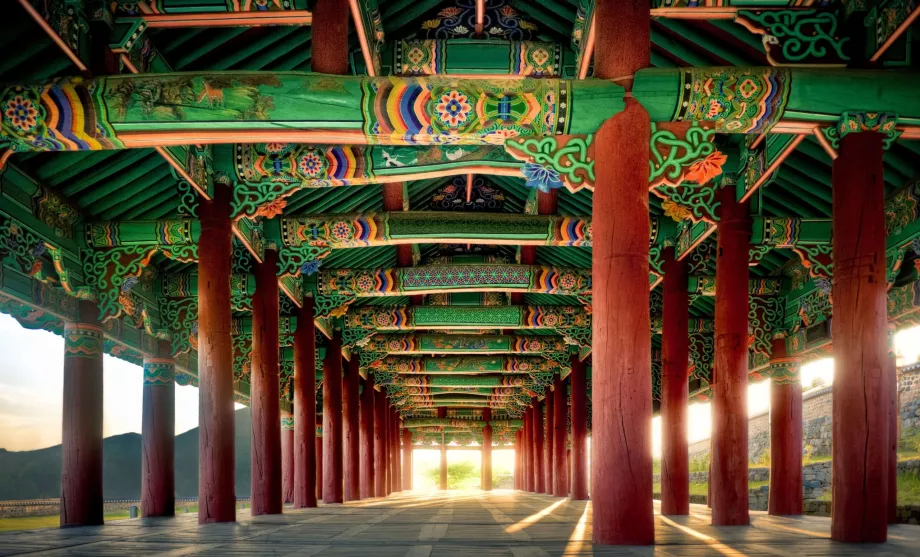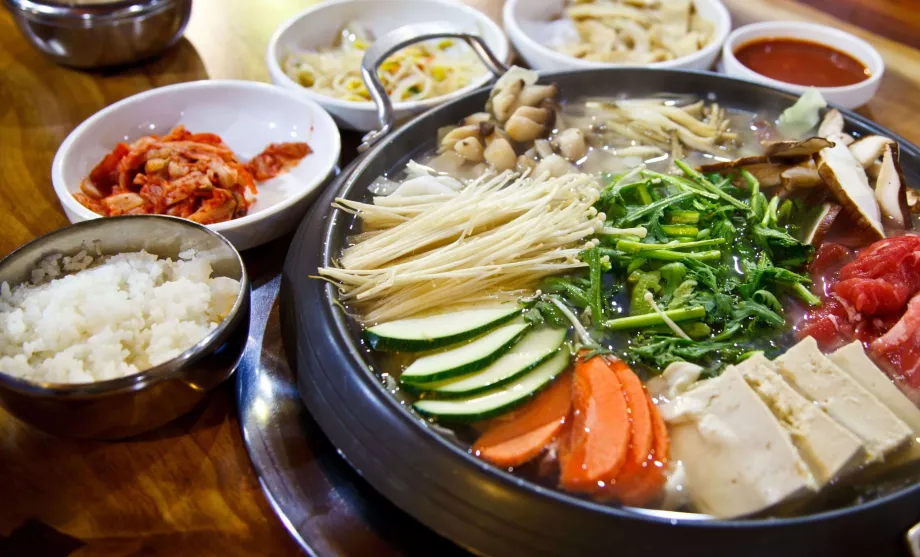Traditional food in South Korea

Korean cuisine
Colours play a major role in food - every colour means something. Korean cuisine is diverse, compared to us they do not consume so much meat and the basis of every meal is a bowl of rice, soup and lots of small bowls called banchan.
Typical banchan also includes traditional spicy kimchi (specially prepared cabbage that is pickled for a long time with garlic and other local flavourings). Dishes that are definitely worth trying include bibimbap - a tasty and easily digestible mixture of vegetables, meat and eggs served over rice, bulgogi - thin slices of grilled beef marinated in a sweet soy sauce, jeon - spicy pancakes usually served with seafood and spring onions, or jjigae - stewed meat in a thick sauce served still simmering in a hot clay pot. Among the most popular drinks are various types of tea, which are not necessarily made from tea leaves, such as yujacha - lemon tea and insamcha - ginseng tea.
Usual prices in restaurants
Usual prices for a hot meal range from 10,000 - 20.000 krw. You can often buy drinks from vending machines - 1.000 krw / 250 ml (in car parks, at monuments, museums etc). Like everywhere, there are international chains like McDonald's or Burger King, but also local fast food joints (for example, Isaac Toast Myeongdong in Seoul - toast for 3.000 krw). If you want to try a more upmarket restaurant, you'll find Jung Sik Dang in Seoul, where a four-course menu will set you back 60.000 krw.
Any questions left?
If you have any questions or comments about the article...


